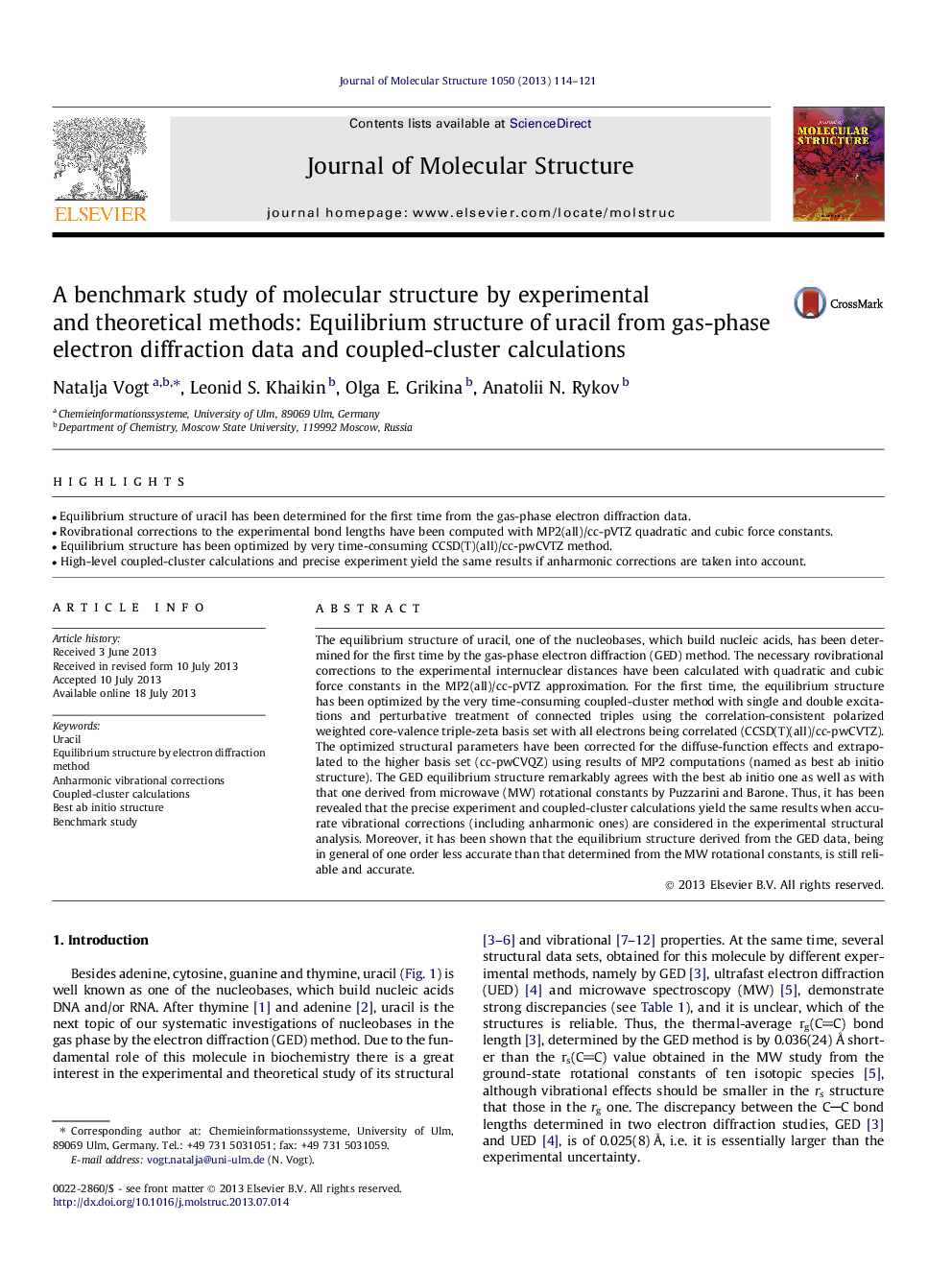| Article ID | Journal | Published Year | Pages | File Type |
|---|---|---|---|---|
| 1408637 | Journal of Molecular Structure | 2013 | 8 Pages |
•Equilibrium structure of uracil has been determined for the first time from the gas-phase electron diffraction data.•Rovibrational corrections to the experimental bond lengths have been computed with MP2(all)/cc-pVTZ quadratic and cubic force constants.•Equilibrium structure has been optimized by very time-consuming CCSD(T)(all)/cc-pwCVTZ method.•High-level coupled-cluster calculations and precise experiment yield the same results if anharmonic corrections are taken into account.
The equilibrium structure of uracil, one of the nucleobases, which build nucleic acids, has been determined for the first time by the gas-phase electron diffraction (GED) method. The necessary rovibrational corrections to the experimental internuclear distances have been calculated with quadratic and cubic force constants in the MP2(all)/cc-pVTZ approximation. For the first time, the equilibrium structure has been optimized by the very time-consuming coupled-cluster method with single and double excitations and perturbative treatment of connected triples using the correlation-consistent polarized weighted core-valence triple-zeta basis set with all electrons being correlated (CCSD(T)(all)/cc-pwCVTZ). The optimized structural parameters have been corrected for the diffuse-function effects and extrapolated to the higher basis set (cc-pwCVQZ) using results of MP2 computations (named as best ab initio structure). The GED equilibrium structure remarkably agrees with the best ab initio one as well as with that one derived from microwave (MW) rotational constants by Puzzarini and Barone. Thus, it has been revealed that the precise experiment and coupled-cluster calculations yield the same results when accurate vibrational corrections (including anharmonic ones) are considered in the experimental structural analysis. Moreover, it has been shown that the equilibrium structure derived from the GED data, being in general of one order less accurate than that determined from the MW rotational constants, is still reliable and accurate.
